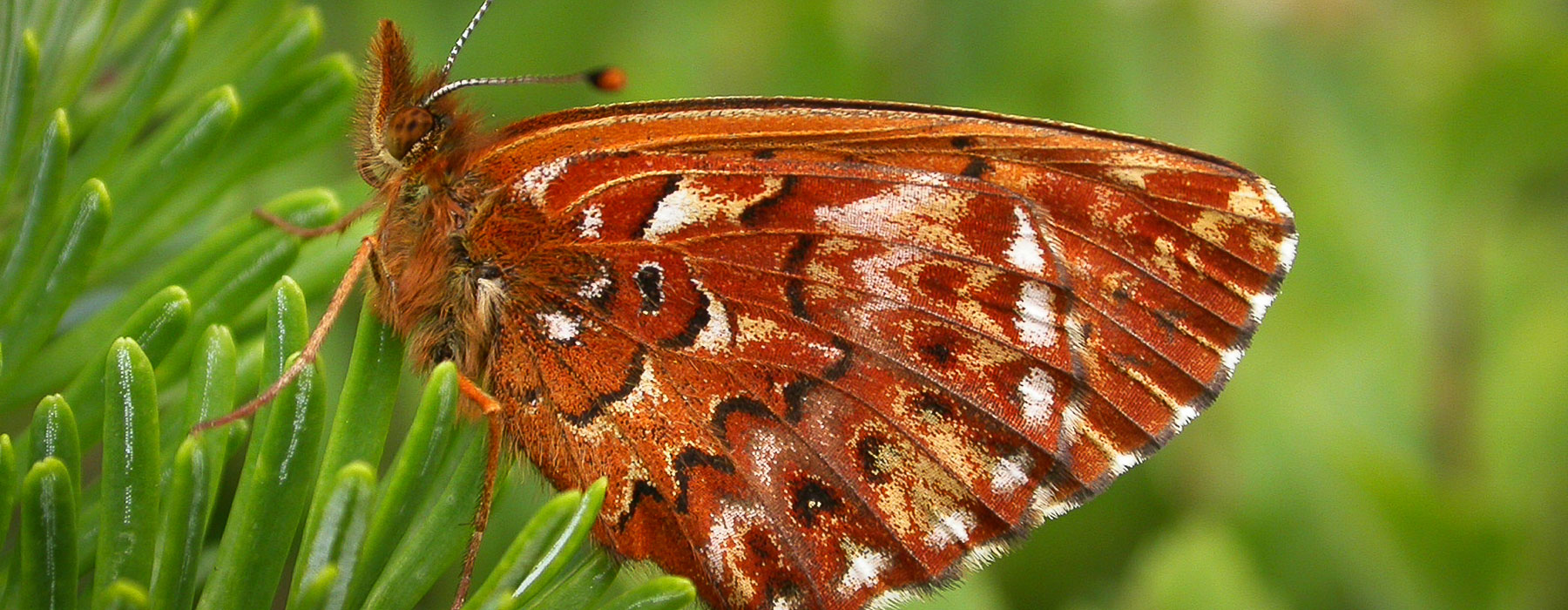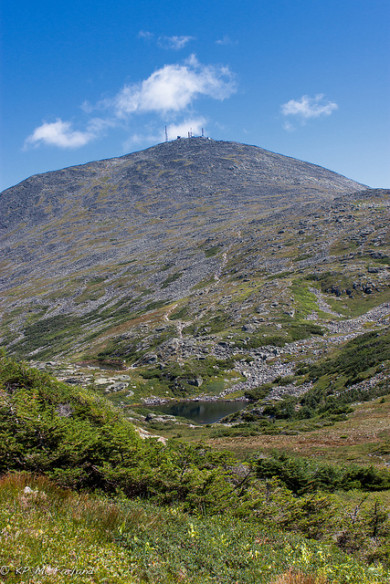Perched atop New Hampshire’s Presidential Range in the alpine tundra are two butterflies that exist nowhere else on earth. As the tundra followed the retreat of glaciers northward some 10,000 years ago, these butterflies were left behind and remain marooned to this day on these sky islands.
The White Mountain Arctic and the White Mountain Fritillary are subspecies endemic to these 4 square miles of alpine habitat. It is hard to imagine butterflies with wing spans of just one-and-a-half inches surviving the fierce weather of Mount Washington, but these are especially adapted. Most butterflies complete their life cycle in less than one year. Because alpine summers are short, it takes two years of nocturnal dining on Bigelow’s Sedge for White Mountain Arctic caterpillars to mature. It isn't until the third summer that they finally pupate under a rock, emerge from their chrysalis, mate, and lay eggs in late June to mid-July. Because of their prolonged life cycle, these have some of the longest life spans known for butterflies.
VCE biologist Kent McFarland took the first hard look at the conservation status of these two butterflies for the White Mountain National Forest’s 2005 management plan. Although at first blush both species may seem secure on these protected summits, there are several threats to their long-term survival—global climate change, atmospheric pollution, and recreation. Thanks to VCE’s work, these unique butterflies are now formally recognized as “sensitive species” by the White Mountain National Forest. And, the New Hampshire Fish and Game Department listed the Arctic as threatened and the Fritillary as endangered in 2008.
Today, we’re continuing to examine the ongoing health of these populations with baseline population monitoring. “We have a lot of experience with wildlife monitoring at VCE, but these two butterflies pose a real challenge,” said McFarland. “With the world’s worst weather, rough terrain, unique life-history traits, and sensitive plant species that don’t like boots on them…we knew we had our work cut out for us.”


